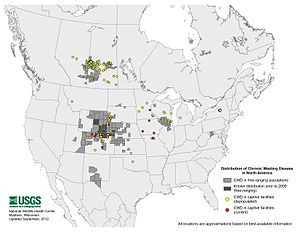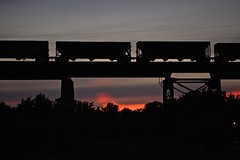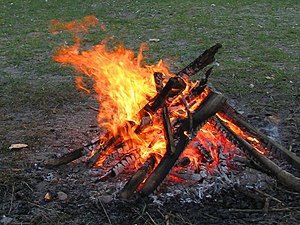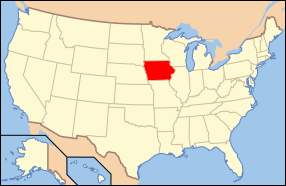 Image via Wikipedia
Image via Wikipedia
With Minnesota’s firearms deer season getting underway on Saturday, Nov. 5, the Minnesota Department of Natural Resources’ (DNR) approximately 200 conservation officers will be traveling the back roads, hiking through the woods, or spending seemingly endless hours on patrol ensuring that hunters hunt safely and ethically, and follow the state’s hunting rules and regulations.
“The vast majority of deer hunters in Minnesota abide by the rules and regulations, while a small percentage run afoul of the law,” said Col. Jim Konrad, DNR Enforcement Division director. “Hunters can best help us protect and preserve the resource by simply following the rules.”
Statistics show conservation officers wrote 1,110 citations or warnings during the 2010 firearms deer season. That compares with 1,035 citations or warnings in 2009.
A large number of citations are written each year for failure to validate a site tag. Minnesota’s deer license and site tag come as a two-part form. The upper half is the site tag for tagging the deer in the field. The lower half is the deer license and registration slip.
Konrad said that at the kill site, a hunter must detach the site tag from the deer license/registration slip.
Before moving the deer, the hunter must validate the tag by using a knife or similar sharp object to cut out the appropriate notches indicating the month the deer was killed, date it was killed and the time of day it was killed. “Mark carefully – if more than one month, date or time is cut out or marked, the tag becomes invalid,” Konrad said.
The validated site tag must be attached to the deer when the deer is placed on a motor vehicle or an ATV, a vehicle or a trailer being towed by an ATV, or brought into a camp, yard or other place of habitation.
Transporting a loaded firearm in a motor vehicle is another recurring deer hunting violation.
It is unlawful for any person to transport a firearm, including a handgun, in or on a motor vehicle unless the firearm is unloaded and in a case made expressly for that purpose; unloaded and in the closed trunk of a motor vehicle; or carried under a valid permit to carry a pistol or handgun.
There are circumstances, however, when a person may transport unloaded, uncased firearms (excluding pistols) in a motor vehicle, including ATVs: while at a shooting range with permission; while lawfully hunting on private or public land; or while travelling to or from a site the person intends to hunt or has lawfully hunted that day.
Firearms must be transported unloaded and cased within Anoka, Hennepin or Ramsey counties; within the boundaries of a home rule, charter or statutory city with a population of 2,500 or more; on school grounds; or as otherwise restricted in game refuges, shining or night vision laws.
Other common violations include hunting over bait, license not in possession, shooting from the road right-of-way at big game, and hunting without permission on private property.
“Hunters need to be aware of their location at all times while hunting, to be sure they are not trespassing on private property,” Konrad said.
While hunting deer, blaze orange is required on a hunter’s cap and outer clothing above the waist, excluding sleeves and gloves. Blaze orange includes a camouflage pattern of at least 50 percent blaze orange within each square foot.
While conservation officers are constantly working to protect Minnesota’s wildlife, they also depend on the public to report unethical hunters or people who disobey state wildlife laws.
Turn-In-Poachers is a non-profit organization also working to protect and preserve Minnesota’s natural resources. The program offers rewards to citizens who report poachers or other resources violations. Callers do not have to reveal their names. To report a violation, call 800-652-9093, or #TIP on most cell phones.
Top 10 list of firearm deer hunting violations in 2010:
- Fail to validate tag (180)*
- Hunt over bait (150)
- Untagged (131)
- Transport uncased/loaded firearm (127)
- Fail to register (110)
- Misdemeanor shining (92)
- License not in possession (89)
- Trespass (87)
- Shoot from road right of way at big game (81)
- No license (63)
* Number in parenthesis indicates number of citations or warnings in 2010
























